HashiCorp Certified: Consul Associate Certification
Register a Service Proxy
Demo Service Mesh
In this guide, we’ll deploy a sample application on a HashiCorp Consul Service Mesh. You’ll use Consul Connect to secure communication between two microservices—dashboard and counting—each with its own sidecar proxy. Finally, you’ll control traffic using Consul intentions.
Based on the HashiCorp Learn tutorial on Consul Service Mesh, we assume you have a Consul cluster with two server nodes and two web servers. We’ll:
- Enable Consul Connect for TLS encryption
- Register counting and dashboard services
- Launch services with sidecar proxies
- Verify mutual TLS traffic
- Manage service intentions

1. Enable Consul Connect
First, activate Consul Connect on each server node so sidecar proxies can establish mutual TLS.
Prerequisites
– Consul 1.7+ installed
– Systemd or another init system
– Network connectivity between nodes
Edit /etc/consul.d/config.hcl on consul-node-a:
# /etc/consul.d/config.hcl
log_level = "INFO"
node_name = "consul-node-a"
server = true
ui = true
leave_on_terminate = true
data_dir = "/etc/consul.d/data"
datacenter = "us-east-1"
client_addr = "0.0.0.0"
bind_addr = "10.0.101.110"
advertise_addr = "10.0.101.110"
retry_join = ["10.0.101.248"]
bootstrap_expect = 2
enable_syslog = true
connect {
enabled = true
performance {
raft_multiplier = 1
}
}
Save and restart Consul:
sudo systemctl restart consul
Repeat on consul-node-b, adjusting node_name, bind_addr, advertise_addr, and retry_join. When both nodes are up, verify membership:
consul members

2. Register and Configure Services
Now register the two application services on separate web servers:
| Service | Node | Port | Definition File |
|---|---|---|---|
| counting | counting | 9003 | counting.hcl |
| dashboard | dashboard | 9002 | dashboard.hcl |
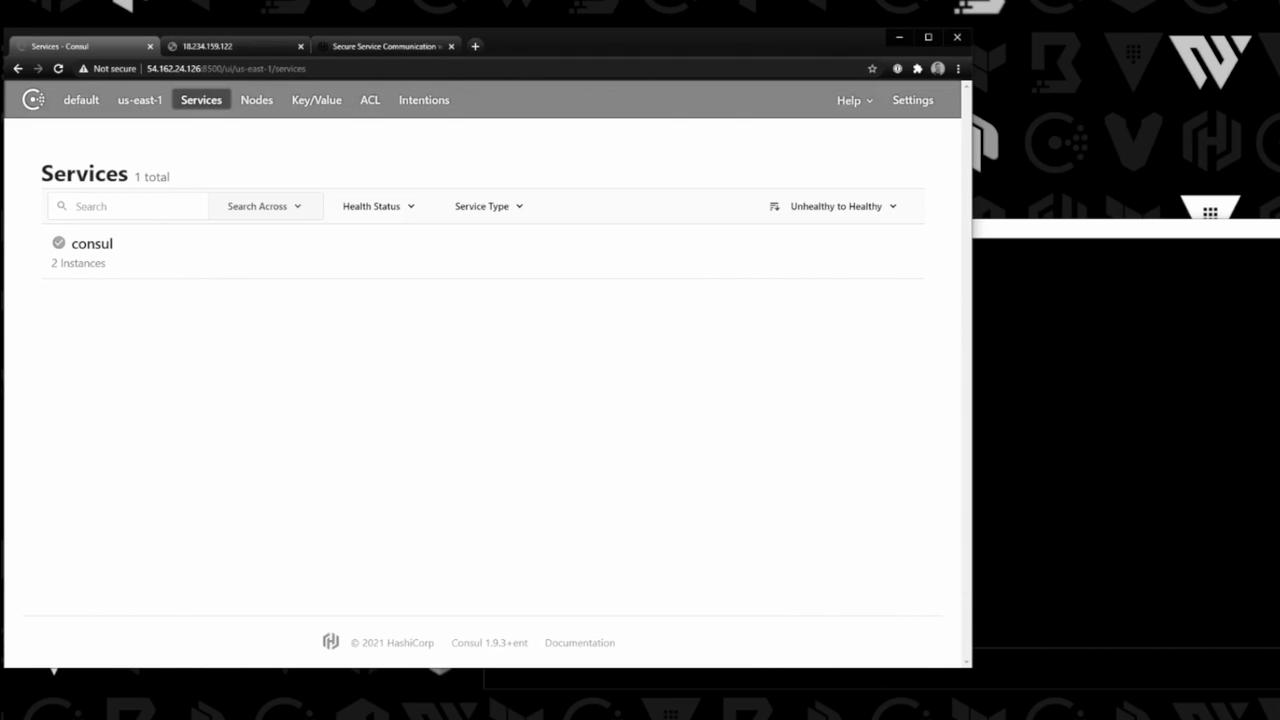
2.1 Counting Service
On the counting server, create counting.hcl:
# counting.hcl
node_name = "counting"
service {
name = "counting"
id = "counting-1"
port = 9003
connect {
sidecar_service {}
}
check {
id = "counting-check"
http = "http://localhost:9003/health"
method = "GET"
interval = "1s"
timeout = "1s"
}
}
Register it:
consul services register counting.hcl
2.2 Dashboard Service
On the dashboard server, create dashboard.hcl:
# dashboard.hcl
node_name = "dashboard"
service {
name = "dashboard"
port = 9002
connect {
sidecar_service {
proxy {
upstreams = [
{
destination_name = "counting"
local_bind_port = 5000
}
]
}
}
}
check {
id = "dashboard-check"
http = "http://localhost:9002/health"
method = "GET"
interval = "15s"
timeout = "1s"
}
}
Register it:
consul services register dashboard.hcl
Health Checks
Services are registered immediately but not yet running—health checks will show “critical” until the application and proxy start.
3. Start Services and Sidecar Proxies
Launch each application and its sidecar proxy so traffic is routed via Consul Connect.
3.1 Counting Service & Proxy
On the counting server:
export PORT=9003
./counting-service &
# Start Consul sidecar proxy for counting
consul connect proxy --sidecar-for counting-1 > counting-proxy.log &
Check the status in Consul’s UI:
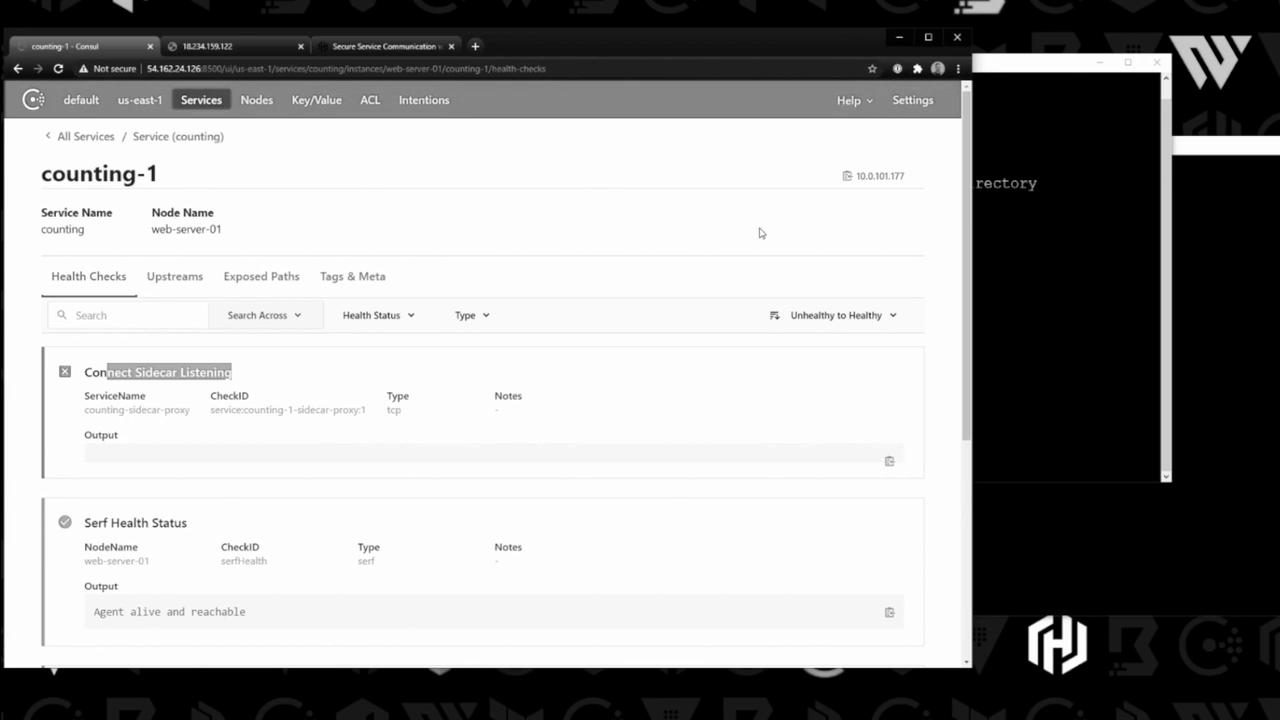
3.2 Dashboard Service & Proxy
On the dashboard server:
export PORT=9002
export COUNTING_SERVICE_URL="http://localhost:5000"
./dashboard-service &
# Start Consul sidecar proxy for dashboard
consul connect proxy --sidecar-for dashboard > dashboard-proxy.log &
Now both sidecars are active and enforce mTLS.
4. Verify Connectivity
Open your browser to http://<dashboard-node-ip>:9002 and refresh the page. You should see the counter increment via the proxy:

In the Consul UI you’ll also see the service topology and traffic distribution:
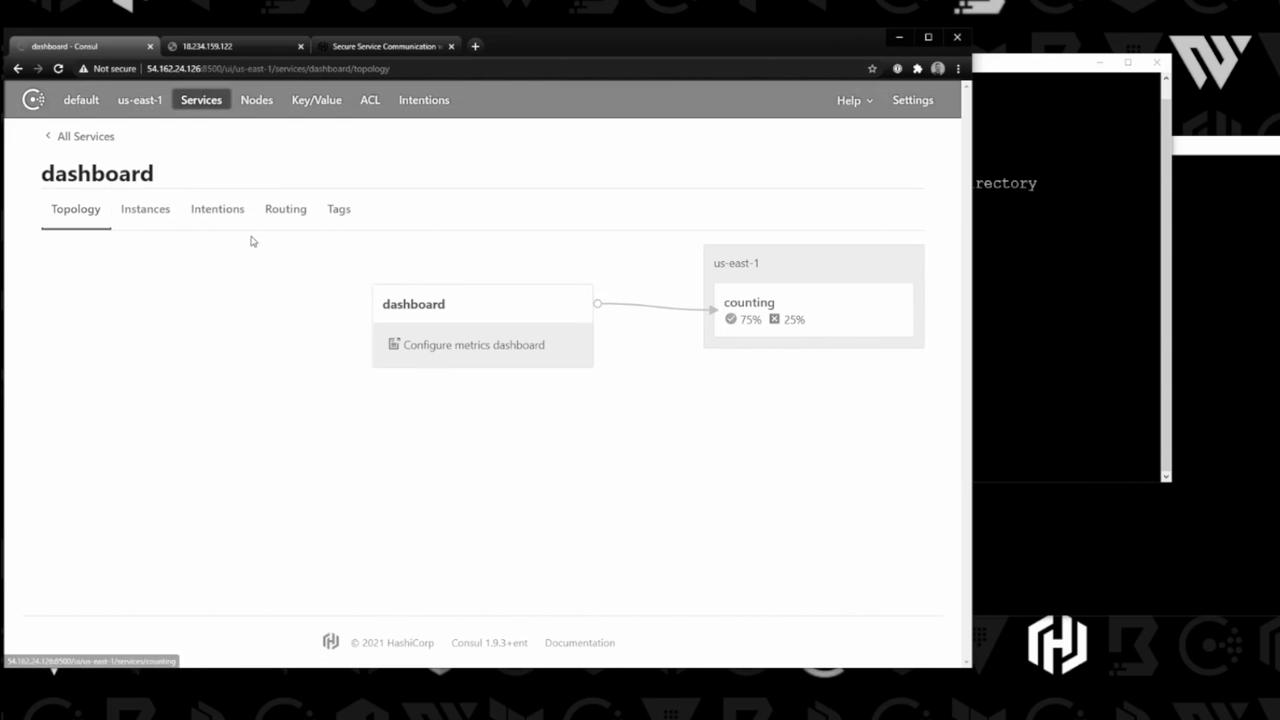
Monitor overall health checks:
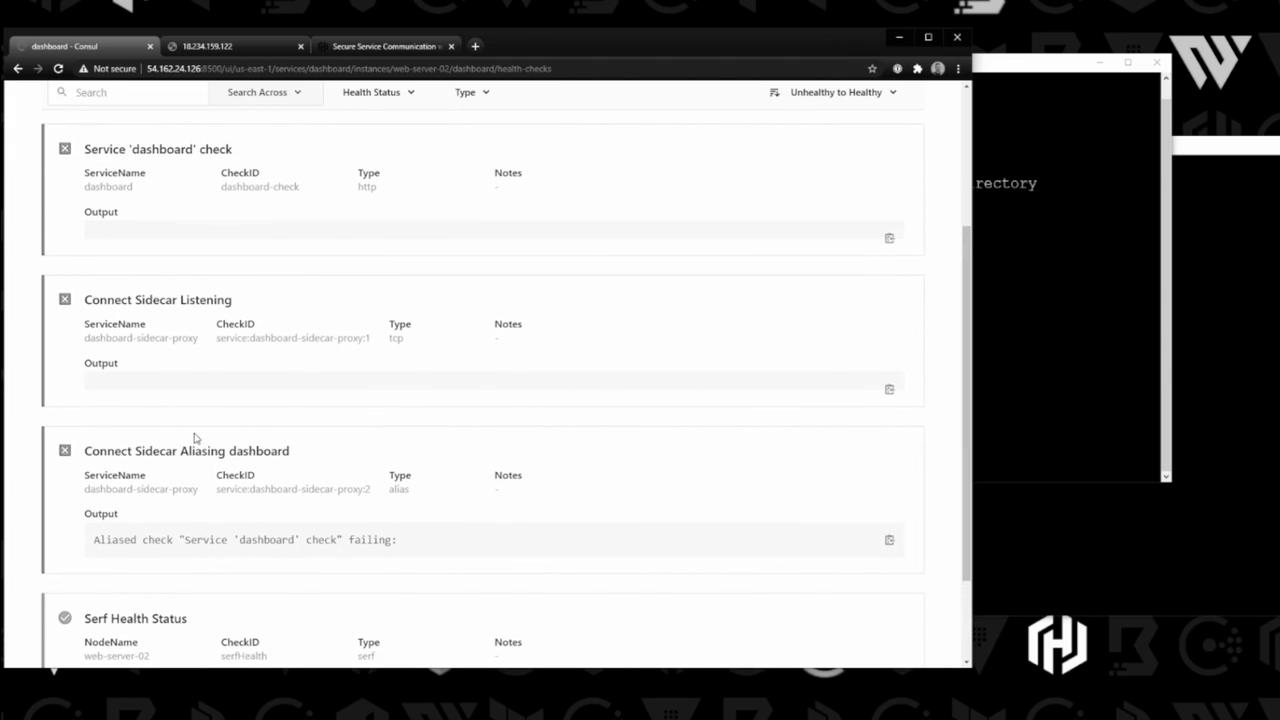
5. Manage Intentions
By default, Consul permits all service-to-service calls. Use intentions to enforce allow/deny policies.
Create a new intention to allow dashboard → counting:
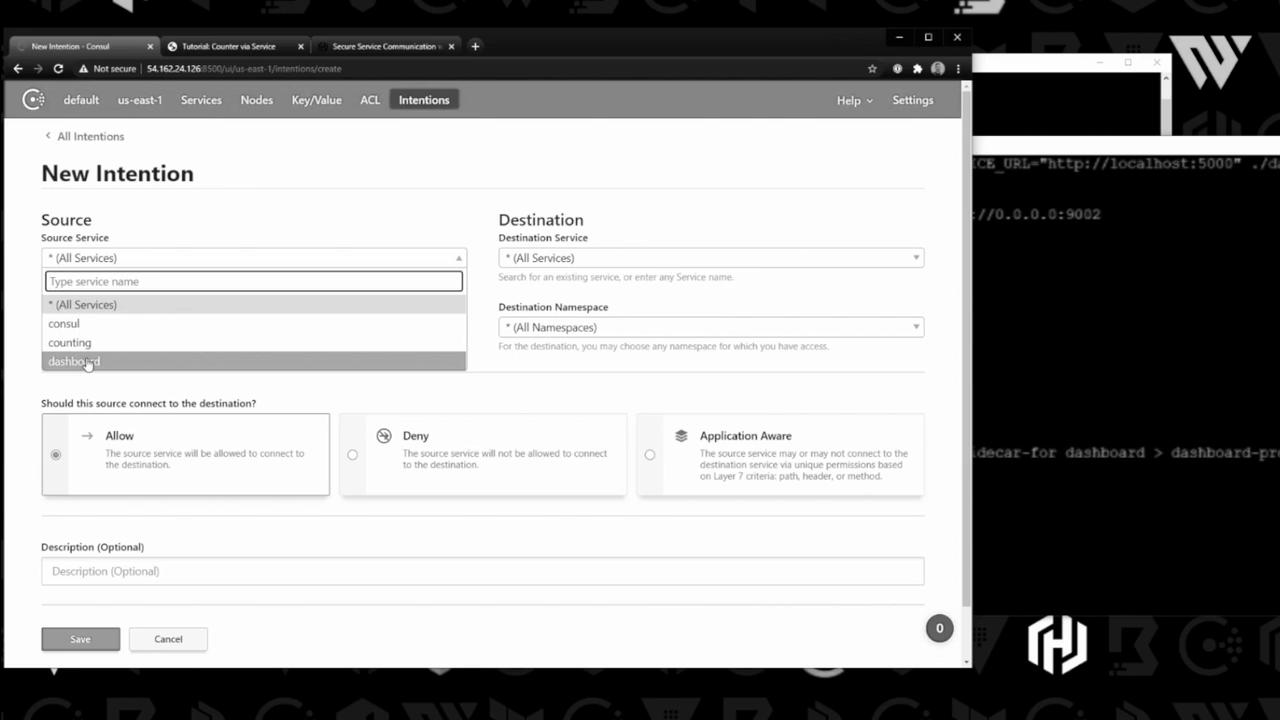
Once saved, you’ll see it in the UI:
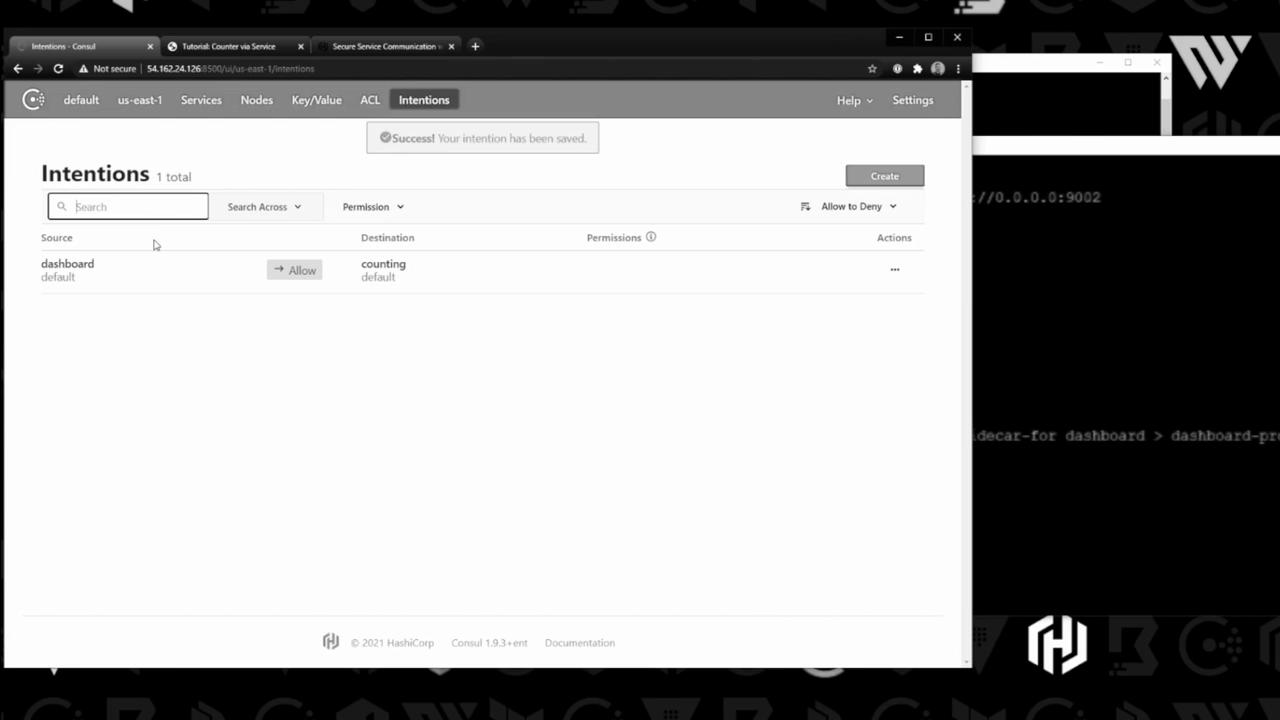
To test a deny rule, switch the intention to Deny:

Save and refresh the dashboard—updates stop, confirming the proxy enforces your policy. Revert to Allow to resume traffic.
Conclusion
You’ve successfully:
- Enabled Consul Connect for mutual TLS service mesh
- Registered services with sidecar proxies
- Started applications and proxies
- Verified secure communication
- Managed traffic via intentions
Consul’s service mesh lets you implement fine-grained security and traffic policies without modifying application code. Happy networking!
Links and References
- Consul Connect Documentation
- Intentions in Consul
- HashiCorp Learn: Service Mesh Tutorial
- Consul CLI Reference
Watch Video
Watch video content
Practice Lab
Practice lab